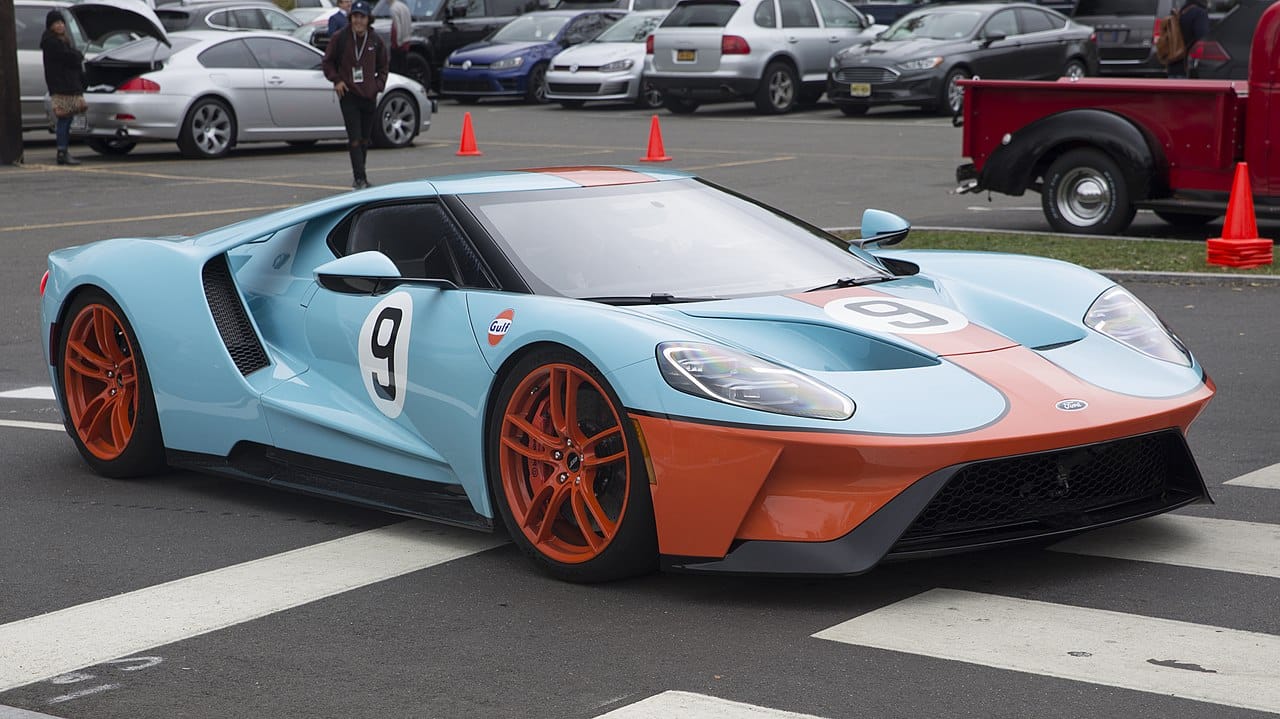13 Cars From the Last Decade Likely To Increase in Value

What if there are $30,000 to $100,000 new cars you can make a safe bet on their near or distant future value? Are there future Ferrari 250 GTOs among models of the past ten years we’ve mostly ignored? How can you know what the market will look like for these cars ten years from now?
A Quora user named Oliver Hoffman was on to something when he said, “One of the simplest formulas for predicting vehicle appreciation is to look at which cars young drivers of the ’90s and ’00s wished they could have afforded.” When you think about it, these future gold mines are probably top trims of certain models that some reviewers like us advised shoppers to neglect because of their cost.
We can also predict the jackpots from limited-run desirable cars sold in small quantities and models people initially hated but somehow attained iconic status. Having applied these formulas, we came up with a selection of cars from the past decade with the potential to become future classics.
Porsche 911 R (2016)

There were just 991 units of this 911 variant for the 2016 model year. It had a 6-speed manual gearbox mated to the same naturally aspirated 4.0-liter flat-six propelling the 911 GT3 RS. That’s the markings of a superstar with high-value potential in the near and distant future.
The powerplant is good for 500-hp and 338 lb-ft of torque, enough to send it from rest to 60 mph in 3.7 seconds and a top speed of 201 mph. It favored a design that paid a close homage to the 1967 911 R racing car.
Though using the GT3 RS’s chassis and power mill, the R is lighter. It ignored the RS’s large rear wing. This gave it a more classic 911 silhouette than the RS.
Ford GT (2017-2022)

The value of a limited-run modern interpretation of an iconic classic like the Ford GT has nowhere to go but up. Approximately 1,350 were produced between 2017 and 2022. The car pays homage to the iconic Ford GT40 Le Mans champion. It’s even better if you can get your hands on special-edition models like the ’66 Heritage Edition and Liquid Carbon Edition.
The modern GT is a racing warrior like the original. Developed with significant input from the Blue Oval’s racing division, the car went on to make Ford proud in motorsport competition, including a class win at the 2016 24H Le Mans.
Chevrolet Corvette Z06 (C7) (2015-2019)

The C7 marked the final chapter in the Corvette’s front-engine tradition, making its performance-oriented Z06 performance package a resounding end of an era. This model could zap from rest to 60 mph in approximately 2.95 seconds and reach a 205 mph top speed. The Package unboxed, among other upgrades, a Michelin Pilot Sport Cup 2 tires.
Its motivation came from a supercharged 6.2-liter LT4 V8 mated to a 7-speed manual or 8-speed automatic to produce 650-hp and 650 lb-ft of torque. It sat above the standard Stingray and below the track-focused ZR1.
As time passes, the C7 Z06 is already holding its value well on the secondary market, and interest is likely to grow due to its unique position in Corvette history. This generation also celebrated the Corvette’s 65th anniversary with the Carbon 65 Edition in 2018.
BMW M2 CS (2020)

The CS was a limited-production, high-performance variant of the M2 and a proud beneficiary of Bimmer’s respected M performance pedigree. Leveraging a lightweight chassis and a generous use of carbon fiber, the CS could wake to 60 mph in approximately 4.0 seconds and achieve a top speed electronically limited to 174 mph, that is, when equipped with the M Driver’s Package.
Gearheads and collectors will always place a premium on the S55’s aggressive exhaust note. The S55 twin-turbo 3.0-liter straight-six makes 444-hp and 406 lb-ft of torque. It goes with a 6-speed manual gearbox and an optional 7-speed dual-clutch automatic.
Alfa Romeo 4C (2014-2020)

The Alfa Romeo 4C possesses a timeless design that should keep it desirable for a long time. Alfa made approximately 9,000 of them during its 2014–2020 production years, which include the coupe and eventual spider (convertible) models.
The 4C’s lightweight begins from its carbon-fiber monocoque underpinning, a rare chassis material for automobiles in the 4C’s price range.
The car weighed around 2,500 lbs and featured double wishbone suspension at the front and MacPherson struts at the rear. Motivated by a 1.75-liter straight-4 producing 237 hp, the 4C isn’t the fastest sports car money can buy. It’s a beautiful sports car with sharp handling and direct steering feedback.
Toyota GR Supra (A90) (2020-Present)

The A90 Supra, though a modern interpretation of a legendary classic, has the respect of driving enthusiasts. It was co-developed with BMW and shares plenty with the Z4. Affordable drivers’ cars with lightweight chassis and a 50:50 weight distribution will always be in demand.
The 3.0-liter models benefit from an adaptive variable suspension system that further enhances the GR Supra’s balanced handling. It allows a range of selectable drive modes, including Sport and Comfort.
The powertrains include a 335-hp turbocharged 3.0-liter straight-six and a turbocharged 2.0-liter straight-4 with 255 hp. Both utilize an eight-speed automatic transmission, although the 3.0-liter has a manual option.
Aston Martin V12 Vantage (2014-2018)

We can see where the wind is blowing when an automaker packs a V12 in a small chassis. That’s the story of the Aston Martin V12 Vantage, a high-performance luxury sports car with V12 power and notable driving dynamics. This is no Jaguar and is unlikely to lose value any time soon.
It’s even better if you can get your hands on the ‘more-performance’ S or limited-edition AMR variants. Both the coupe and roadster versions benefit from the British marque’s VH (Vertical/Horizontal) architecture with a near 50:50 weight distribution. The suspension is an adaptive damping system (ADS) with multiple modes — Normal, Sport, and Track.
Ferrari 488 Pista (2018-2020)

The Pista has the ingredients of a future classic, including the most powerful V8 engine ever fitted in a Ferrari. It’s a limited-production, track-focused version of the already delectable 488 GTB, ultimately placing it in the same basket with the 360 Challenge Stradale, 430 Scuderia, and 458 Speciale — all special-series Ferraris.
The Pista makes 710-hp, thanks to the historic twin-turbo 3.9-liter V8 churning out 568 lb-ft of torque and yoked to a 7-speed dual-clutch automatic. This engine gave the Pista the impetus to reach 60 mph in 2.85 seconds and achieve approximately 211 mph top speed.
McLaren 600LT (2018-2020)

The 600LT is a limited-production track-focused supercar based on the McLaren 570S. It is lighter than its progenitor due to its extensive carbon fiber construction. With a curb weight of around 2,749 lbs, this car could rightly claim to be one of the lightest sports cars in its class.
It also benefits from aerodynamic updates, including an extended rear diffuser, fixed rear wing, and specific tweaks for enhanced downforce.
For motivation, the 600LT relied on a 3.8-liter twin-turbocharged V8 that makes 592-hp and 475 lb-ft of torque. It can reach 60 mph in 2.8 seconds and a 204 mph top speed. The “LT” in its name is short for LongTail.
Honda Civic Type R (FK8) (2017-Present)

Everyone who knows the Type R as the high-performance version of the Civic also knows they’re produced in relatively limited numbers, making them highly sought after in the new and used car markets. It has demonstrated its mettle on the track with several FWD production car lap records.
It rides on a specially tuned chassis as a foundation for the adaptive suspension system and limited-slip front differential. The FK8 Type R uses a 6-speed manual shifter mated to a turbocharged 2.0-liter straight-4 with an impressive 306-hp and 295 lb-ft of torque.
Dodge Challenger SRT Demon (2018)

The SRT Demon remains a hotcake as long as people are willing to pay a premium for road-legal extreme performance. Besides slotting as a limited-production high-performance American sports car, the Demon is drag racing optimized.
It confirms this role with features like line lock, launch control, and a transbrake system — all engineered to optimize traction and acceleration.
A decade from now, we can see gearheads and collectors seeking out the Demon’s widebody design and the resultant flared fenders for wider tires. Dodge made 3,300 Demons for the 2018 MY, accompanying them with a Demon Crate package containing tools, performance parts, and accessories to unleash the car’s full potential on the drag strip.
Mercedes-AMG GT R (2017-2021)

The R is a ‘more-performance’ variant of the AMG GT performance coupe. It’s a track-focused German machine that walks the talk with performance-oriented goodies like active aerodynamics (including an adjustable rear wing and active front splitter), lightweight construction, and a specially tuned suspension setup.
AMG offered the car with a Track Page containing lightweight carbon-ceramic brakes, a roll cage, four-point harnesses, and other track-oriented upgrades. It stood, stands, and will stand out with its distinctive exterior design, highlighted by a long hood, aggressive front splitter, and signature wide Panamericana grille.
Jaguar F-Type Project 7 (2016)

This one is a far cry from the I-Pace, which has seen its value crash significantly in the market. The F-Type Project 7 represents a strong salute to Jaguar’s racing heritage, paying homage to the iconic Jaguar D-Type. The “7” in its name is a nod to the British marque’s seven Le Mans victories, including the D-Type’s three wins in the 1950s.
It is a limited-edition, high-performance F-Type variant that made history as the most powerful and fastest Jaguar F-Type.
It could race to 60-mph in approximately 3.8 seconds, thanks to a supercharged 5.0-liter V8 delivering 575 hp and 516 lb-ft of torque. An eight-speed Quickshift automatic directs power to the rear wheels, resulting in an electronically limited top speed of 186 mph. Only 250 Project 7s were made.





